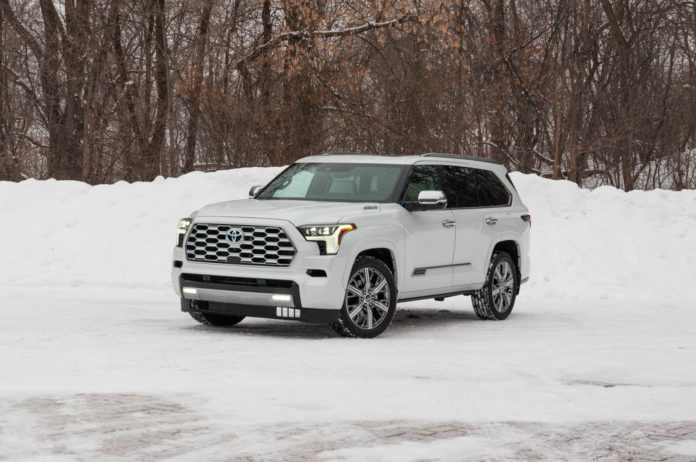It took Toyota nearly 15 years to deliver a new Toyota Sequoia, and what it’s made starts behind its big rivals.
In those 15 years, the Chevrolet Tahoe and Ford Expedition cycled through four generations. There have been four new Escalades and Navigators, too.
Despite the lag, I had high hopes for the new Sequoia. But after spending a week with the 2023 Toyota Sequoia Capstone, all I could think was, “is this the best they could do?”
I wasn’t the only one either. All of our editors had nits to pick with the Sequoias we’d driven lately, from midline models to the TRD Pro and this Capstone.
The top-spec $76,960 Capstone model is aimed at the stealth-wealth crowd the Land Cruiser left behind. But with a thirst for fuel, questionable packaging, and middling interior materials, the Capstone disappoints, just like every other third-generation Sequoia.
2023 Toyota Sequoia
Toyota Sequoia: A thirsty hybrid, and uncalm ride
Every 2023 Sequoia sports a hybrid powertrain meant to save fuel. The 3.5-liter twin-turbo V-6 pairs with an electric motor that’s located in the 10-speed automatic transmission. Rated at 437 hp and 583 lb-ft of torque, it has more torque than any competitor aside from the $150,000 Cadillac Escalade-V. The Sequoia can sprint from 0 to 60 mph in the low six-second range, by my estimate, a good show for a 6,185-pound vehicle.
Upon cold start the powertrain sounds good with a deep exhaust note for a V-6. Part-throttle inputs off the line might trick some into thinking this SUV has more cylinders than it actually does, but the higher-pitched wail of a V-6 kicks in at higher rpm.
The hybrid system tries to improve fuel economy over the outgoing 5.7-liter V-8’s 15 mpg combined, but it doesn’t do much. EPA fuel economy ratings check in at 19 mpg city, 22 highway, 20 combined. Those are optimistic based upon our experience with this powertrain in both the Tundra and the Sequoia, where it averaged between 14.5 and 17.9 mpg.
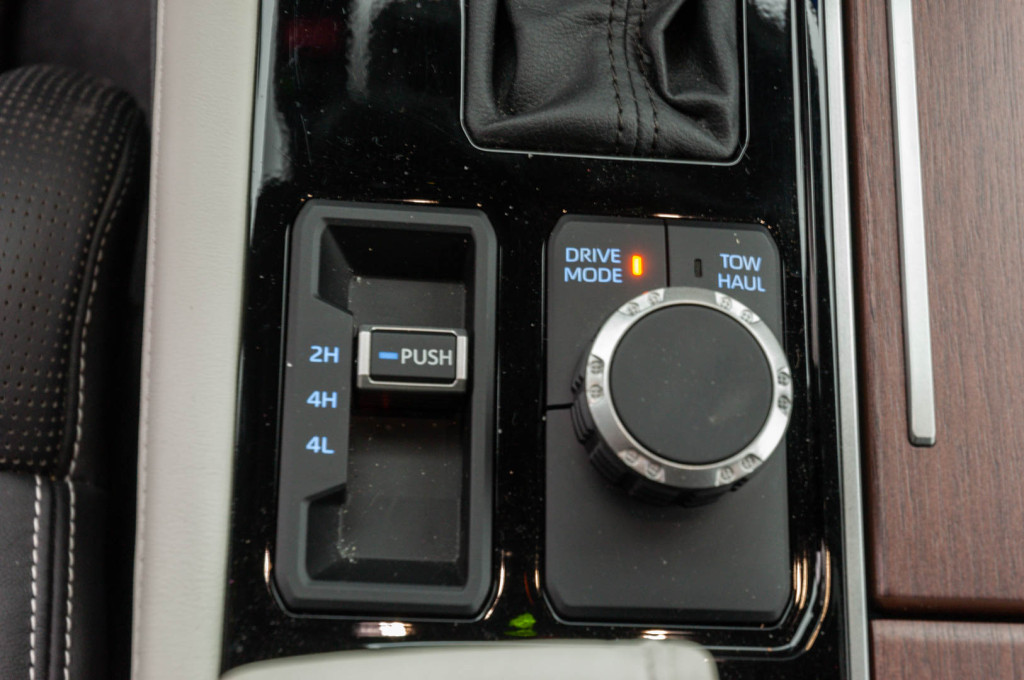
2023 Toyota Sequoia
While it lavished money on the powertrain, Toyota left off some no-brainer hardware. It’s baffling that the expensive Sequoia comes standard with a part-time four-wheel drive system, while every competitor has a full-time system. Toyota doesn’t even offer a full-time system in the Sequoia (or Tundra). At least my Capstone model was equipped with a limited-slip rear differential.
Despite using adaptive dampers, the solid rear axle and suspension tune give the Sequoia a crude ride compared to rivals. Broken pavement sends the Sequoia’s body into shivers and pistoning. A Chevrolet Tahoe on air suspension and adaptive dampers outshines the Sequoia with a more controlled and comfortable ride.
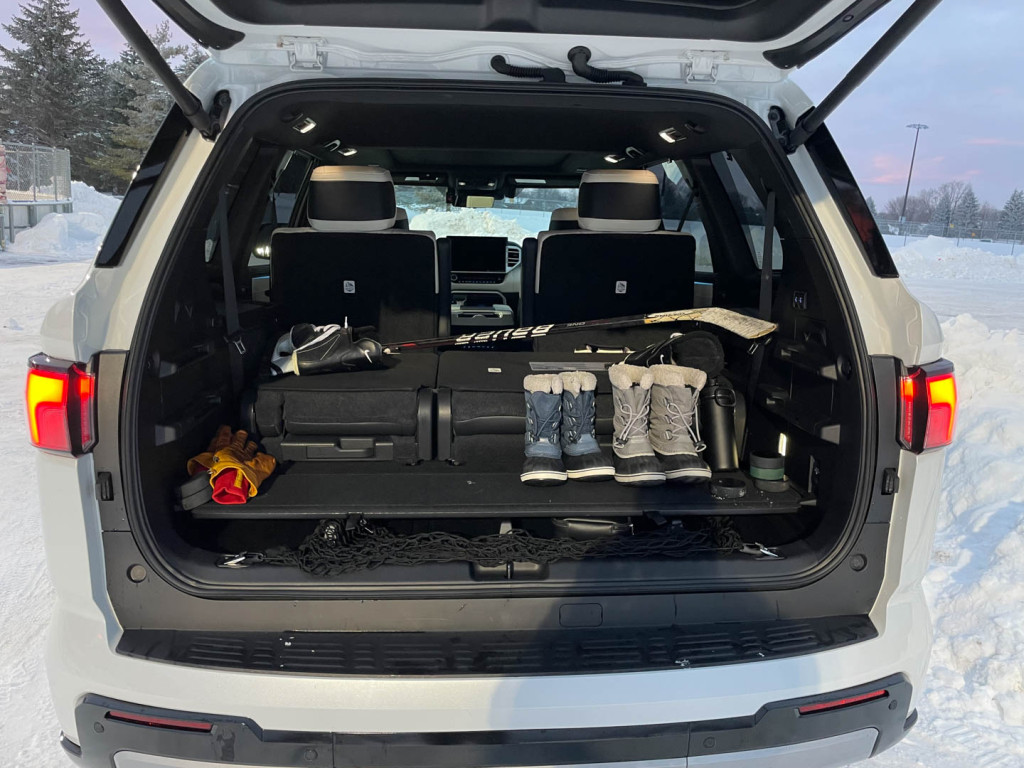
2023 Toyota Sequoia
Toyota Sequoia: Poor interior packaging
The first row of the Sequoia’s interior is nearly a home run. The front seats are some of the best in the segment with wide, supportive backs and bottoms like the Expedition, but firmer cushions. The 12.3-inch digital gauge cluster is shared with the Tundra and features a clean, easy-to-read design with all pertinent information. It’s not reconfigurable like in the Expedition, but its layout is cleaner and it displays more pertinent information than what’s in the Tahoe, Yukon, and Wagoneer.
The 14.0-inch touchscreen has a lot of space for information, but oddly doesn’t offer a split-screen option, which would be especially helpful for Apple CarPlay or Android Auto. There’s no homescreen baked into the system, and devoting 14 inches of space to the navigation map, radio interface, or vehicle settings feels like a lot. The space could’ve been used more creatively. Smaller drivers will have to reach to tap some CarPlay functions, such as “Now Playing,” at the top right corner of the screen.

2023 Toyota Sequoia
The Sequoia’s interior trim aims for high-rent, but even the Capstone’s white-and-black leather and open-pore wood don’t feel substantial. Close the center console, or the little cubby on top of the center armrest, and they slam shut with a hollow plastic crack. Even the door lock and unlock mechanisms ring hollow. Toyota offers no option to avoid the white leather in top-trim Capstone models.
The captain’s chairs in the second row are also wide and supportive, and they’re more comfortable than those found in the Tahoe or Yukon. They also slide fore and aft to horse-trade space with the third row. That third row, however, and the cargo area behind it are poorly packaged.
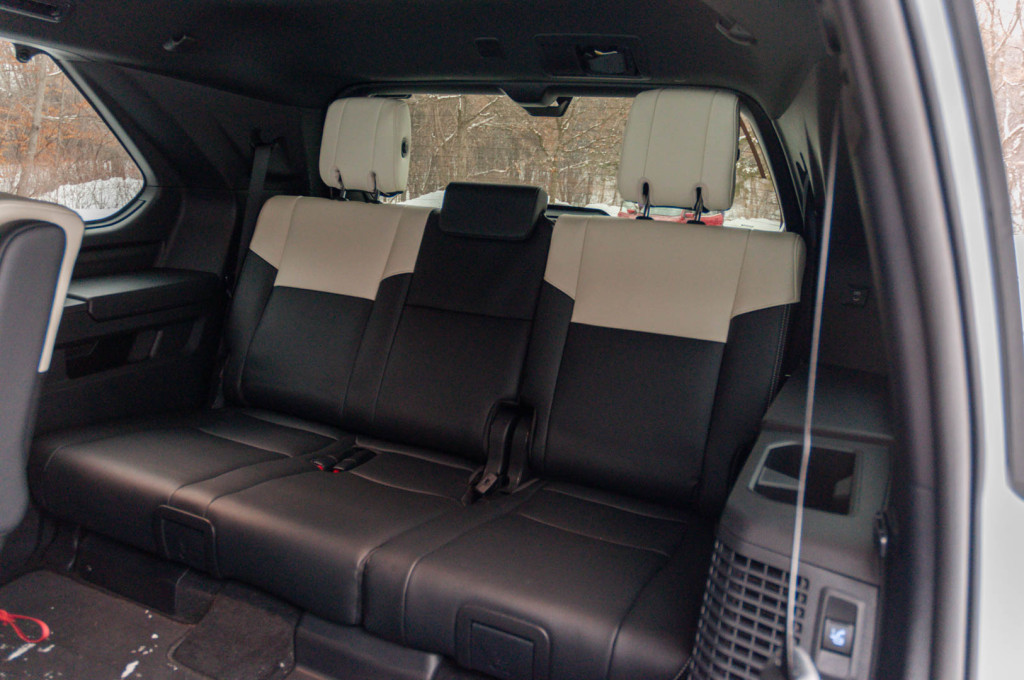
2023 Toyota Sequoia
The third-row seats perch atop the hybrid system’s battery pack, which is mounted above the solid rear axle, creating a high seating position. At 5-foot-10 I ran out of headroom despite a carved-out headliner. Toyota settled on this configuration because it allowed for better entry and exit to the third row while also avoiding foot traffic on the battery. Engineers were able to mount the second-row seats lower while still allowing them to tumble forward. “This location provided the most efficient duct routing to ensure proper air flow to the batteries (cooling),” Toyota spokesperson Josh Burns told The Car Connection. The Tundra pickup truck, which shares its chassis and running gear, places its hybrid battery under the second-row seat bottom.
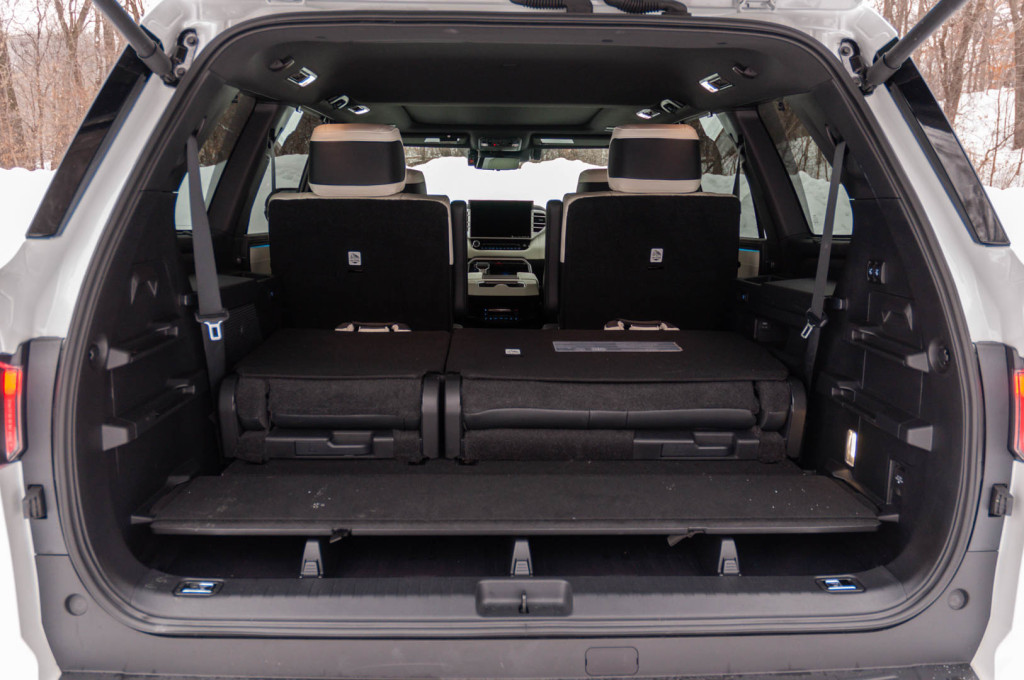
2023 Toyota Sequoia
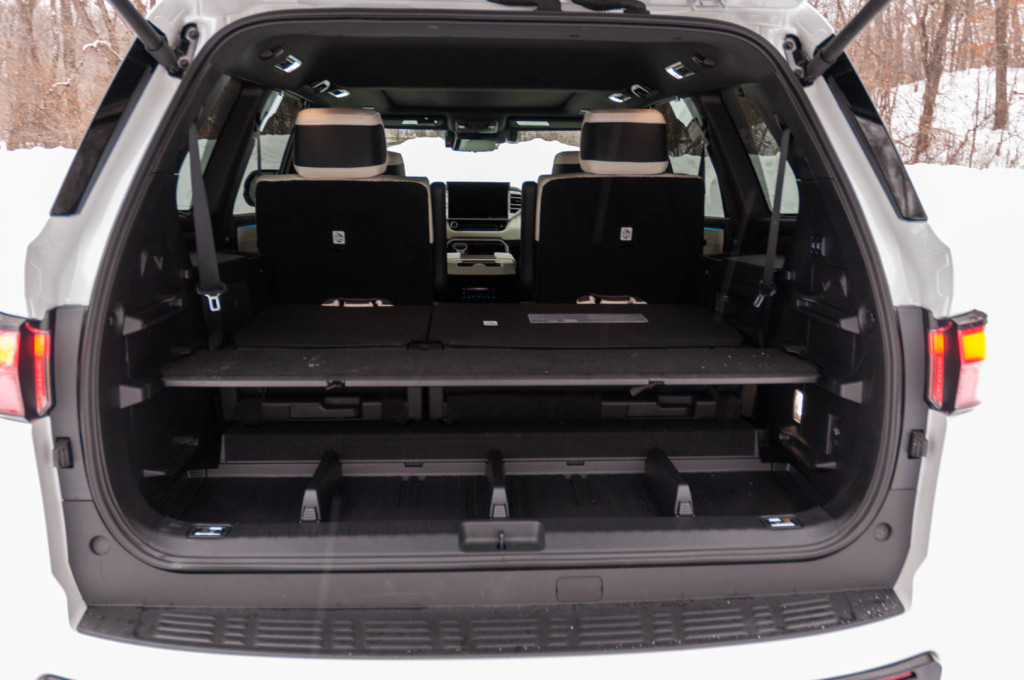
2023 Toyota Sequoia
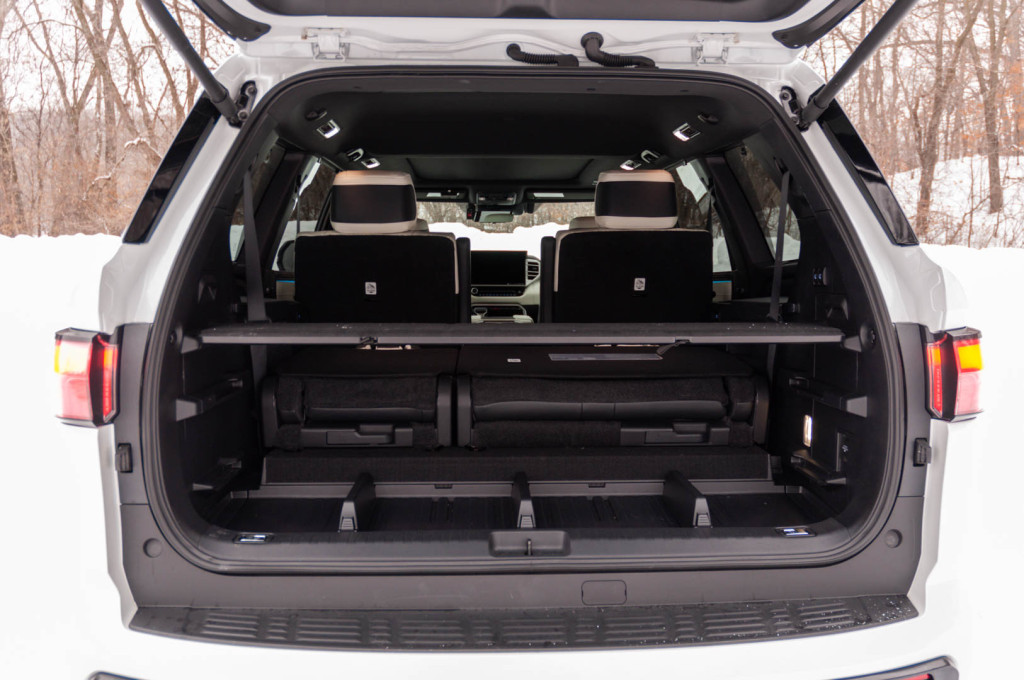
2023 Toyota Sequoia
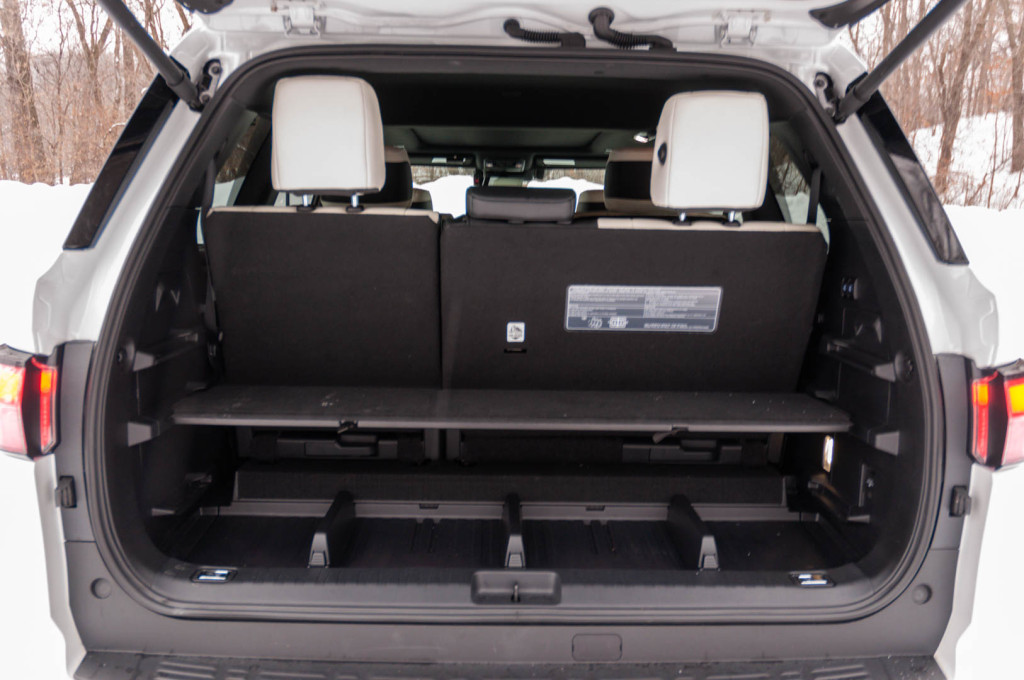
2023 Toyota Sequoia
The third-row seat also doesn’t fold flat, so the cargo area doesn’t have a flat load floor. As a workaround, Toyota installed a small movable shelf in the cargo area. In its lowest position it leaves a small space beneath it that wouldn’t be very useful for storage. The shelf also creates a liftover height higher than just the bumper. Sliding the shelf into the second position up higher attempts to create a flat load floor with the folded third row, but that makes the space below it useful for only flatter items and creates an even higher load floor. Lifting the shelf to the highest mounting point makes no sense. It’s unclear why this option exists at all, though Editorial Director Marty Padgett noted real estate signs will fit with the highest mounting point.
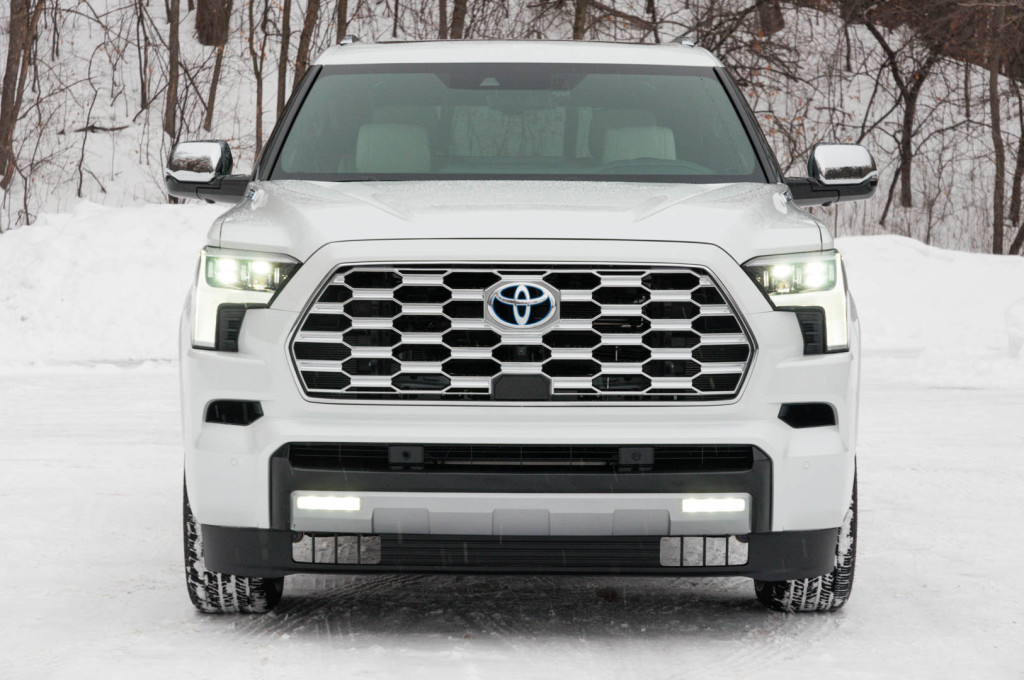
2023 Toyota Sequoia
Toyota Sequoia: Looks like a Tundra SUV
The Sequoia continues to serve as the SUV version of the Tundra for its third generation. From the B-pillars forward it’s mostly the same as the brawny Tundra, which means sculpted headlights, a massive grille, and a high-set cowl that shortens the windshield therefore limiting forward vision.
“Given the high cowl, the thick A-pillars, and the huge trailer mirrors on my test Sequoia, I couldn’t see out of the damn thing. That’s especially bad considering how huge this beast is,” said senior editor Kirk Bell. The high cowl is a design flaw inherited from the Tundra. It can be spotted in a kick-up from the side window line to the hood. Add in the transponder for Toyota’s available telematics system—it dangles in the windshield like an appendix in need of removal—and the view out is poor.
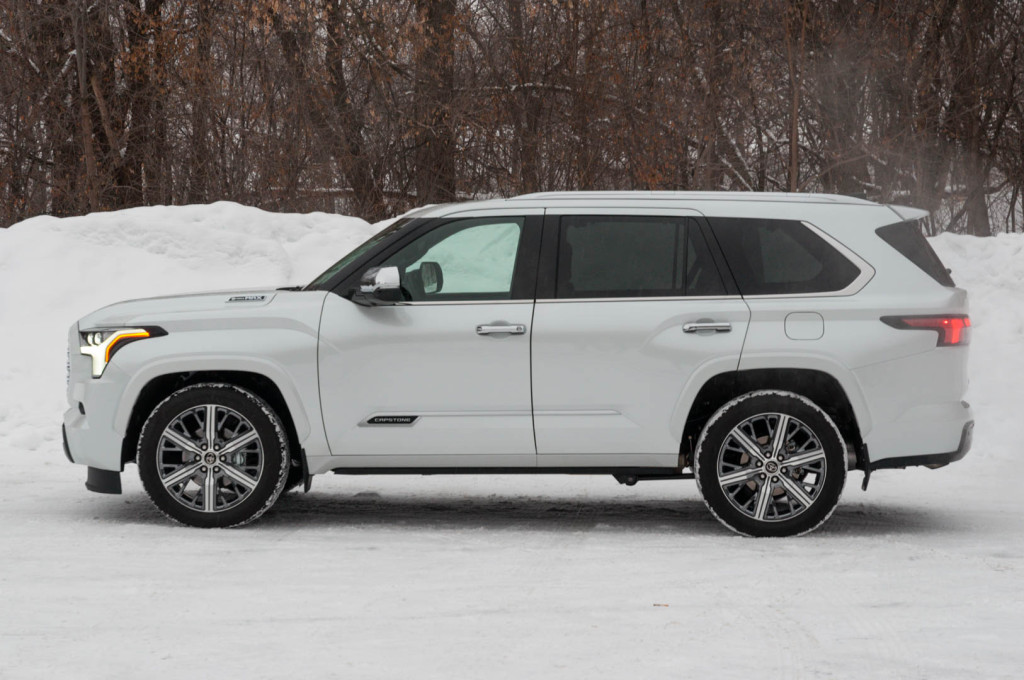
2023 Toyota Sequoia
The rest of the Sequoia’s body has a punched-out look with strong body lines, while the chrome trim on the C-pillars creates a Lexus-like look that provides a hint of sophistication the rest of the hulking design lacks. Top-spec Capstone models like the one tested ride on 22-inch wheels cribbed from the Tundra Capstone parts bin.
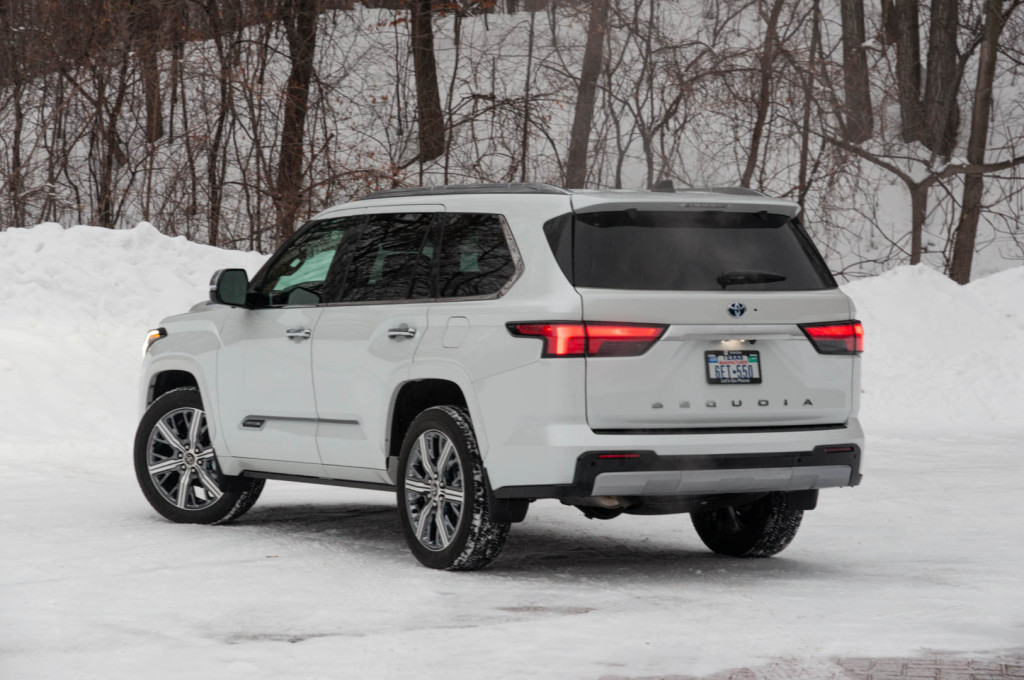
2023 Toyota Sequoia
Toyota Sequoia: Is it worth the money?
A base 2023 Toyota Sequoia costs $60,960 including a hefty $1,595 destination charge (Toyota bolts these things together in Texas, not Japan). But the top-spec Capstone rings in at $77,385, and that’s with two-wheel drive. Add the part-time four-wheel drive system and the price jumps to just over $80,000.
Thousands of drivers will decide that the Sequoia’s good enough simply because it has a Toyota badge, or because it’s available on a dealer lot, or for its hybrid system, or for its three rows of seats. Brand loyalty runs deep. So do the talents of Sequoia’s rivals, in particular the Expedition, Tahoe, and Yukon. The Sequoia’s starting this race from behind.

